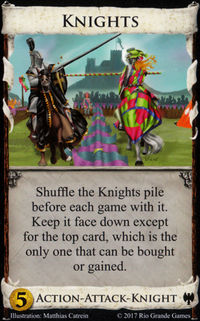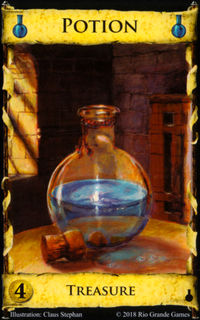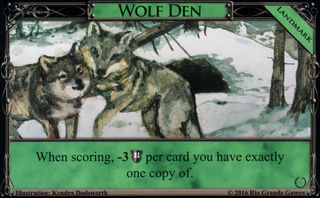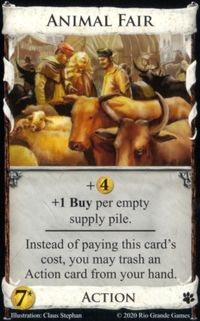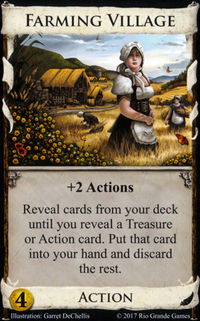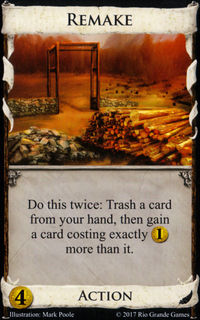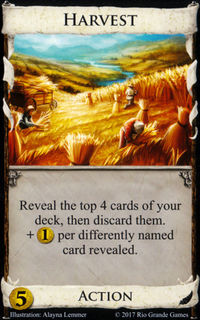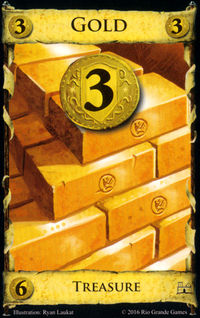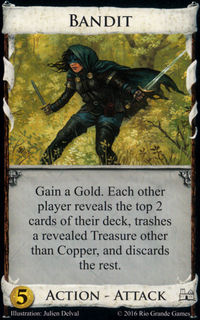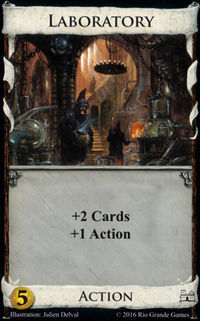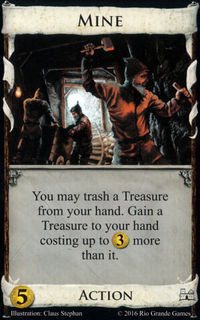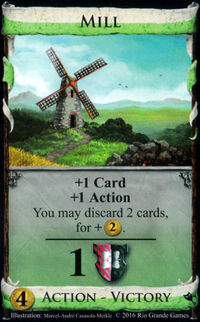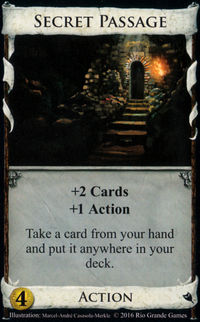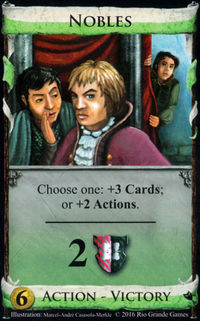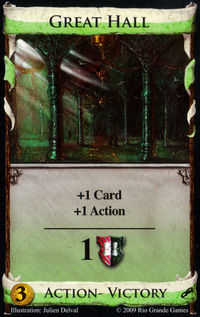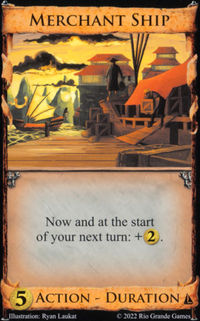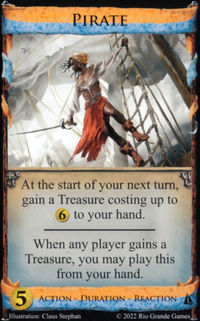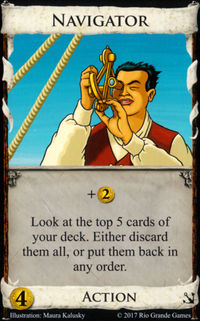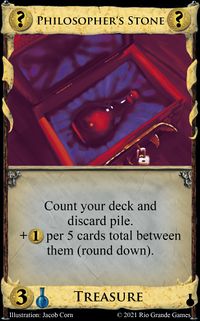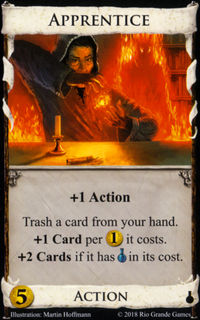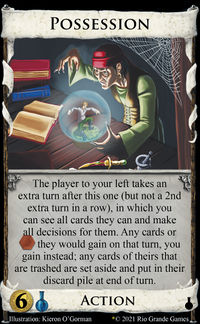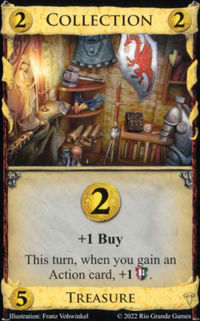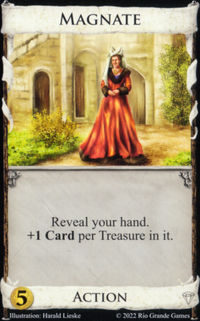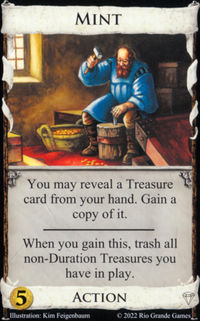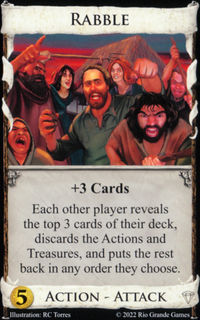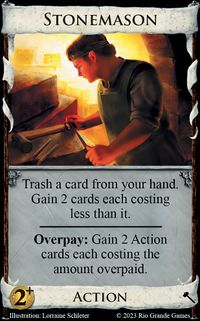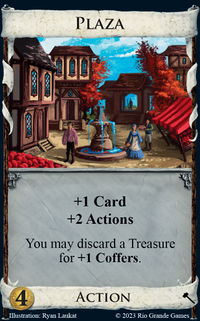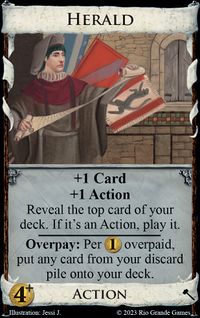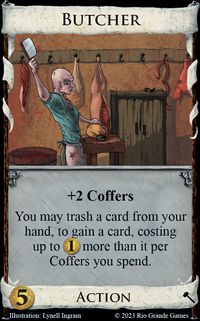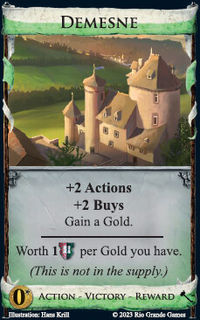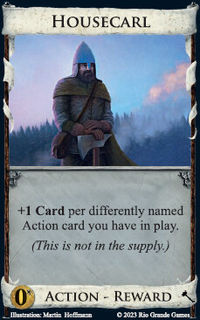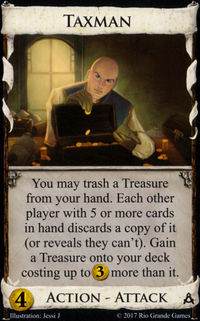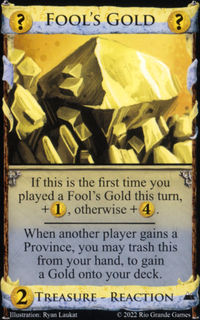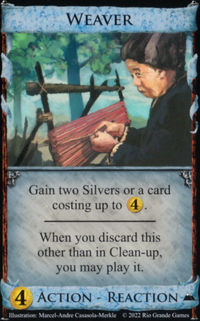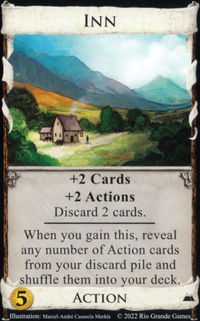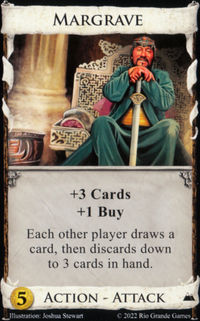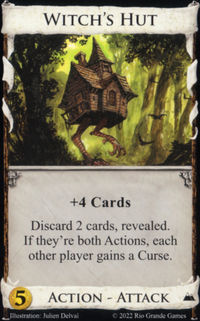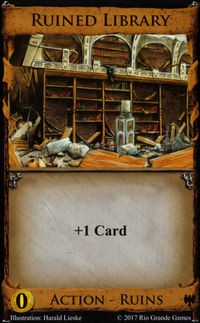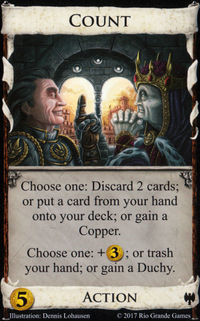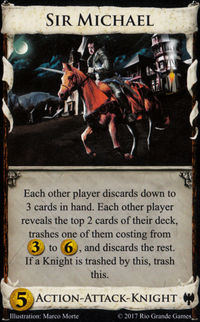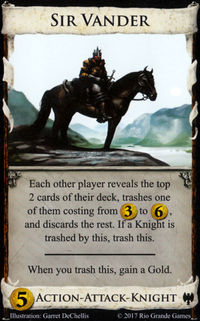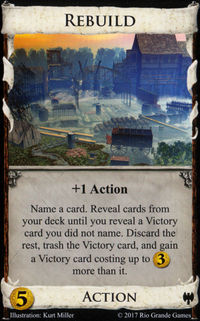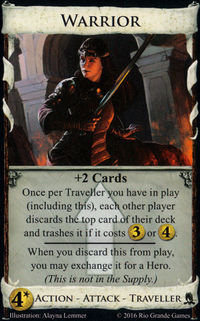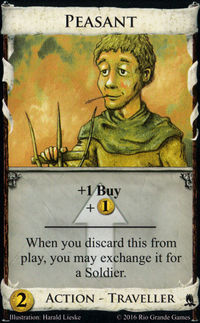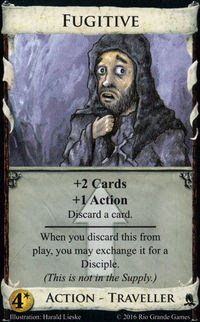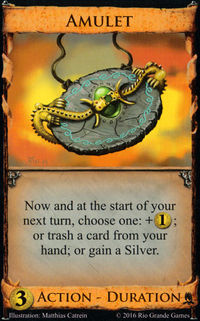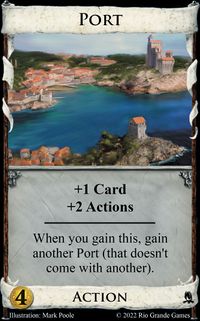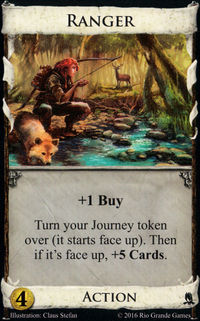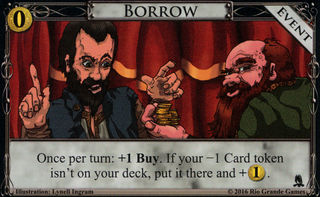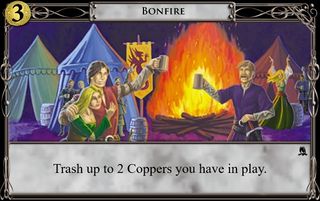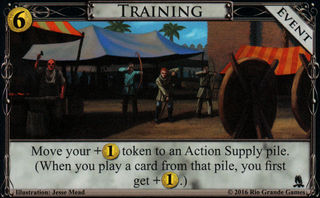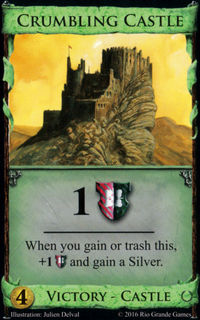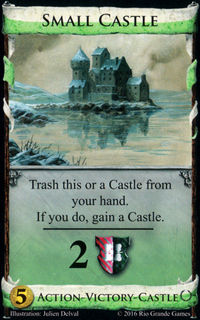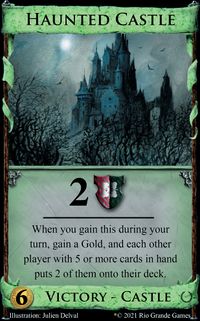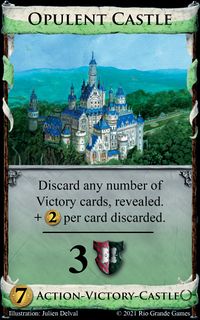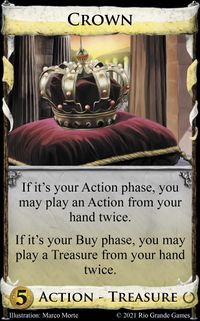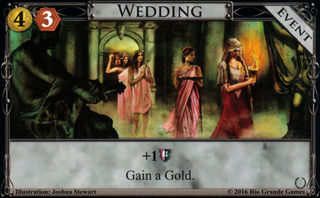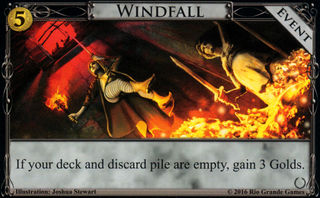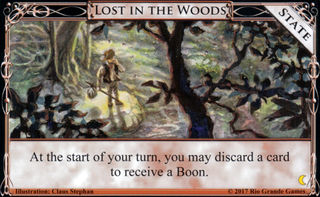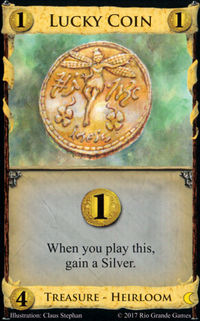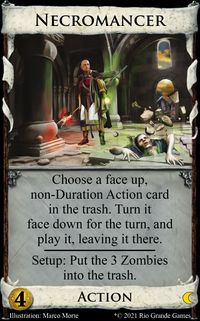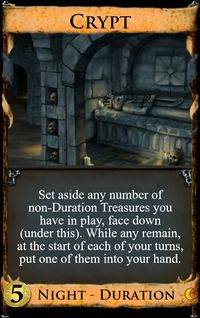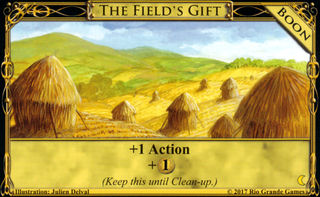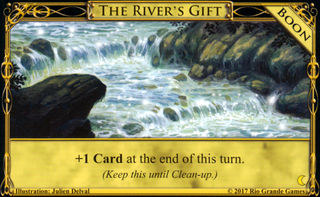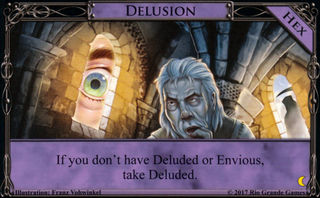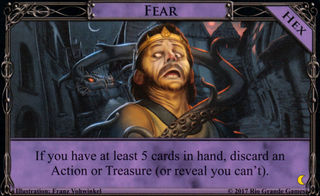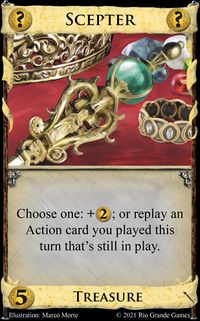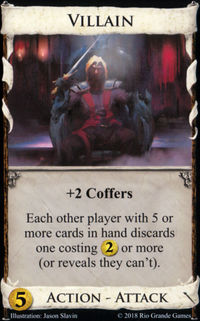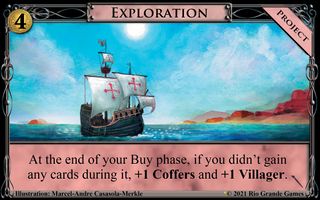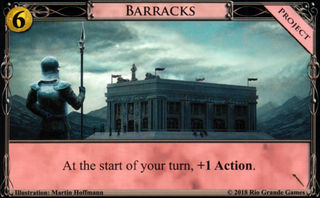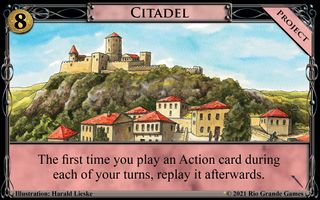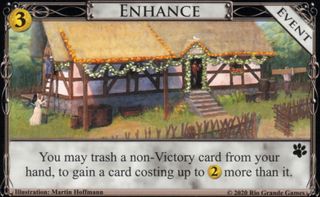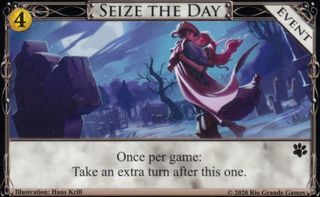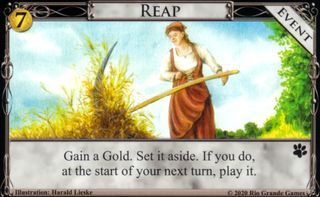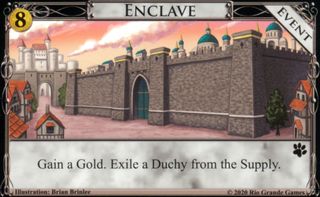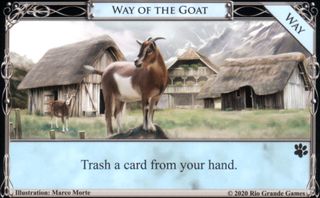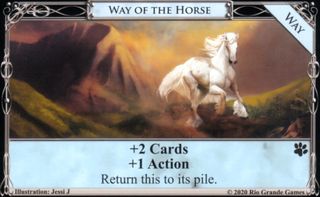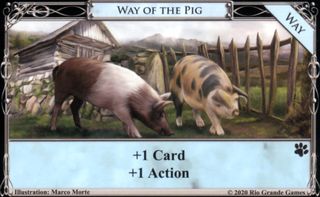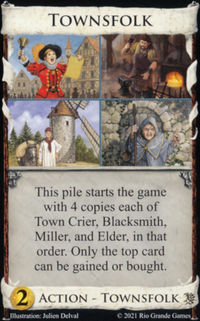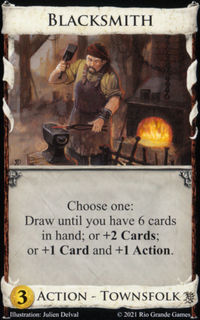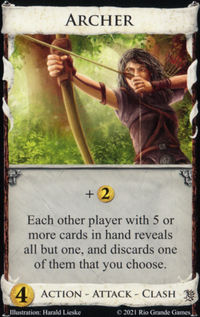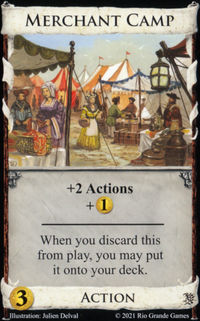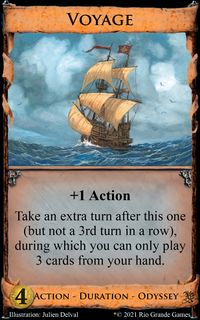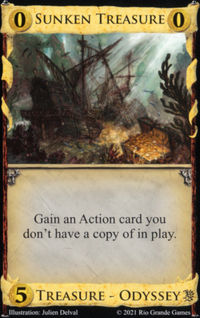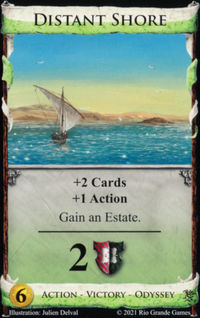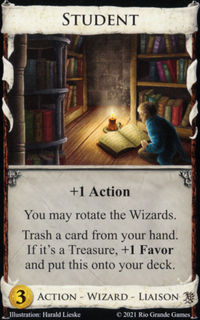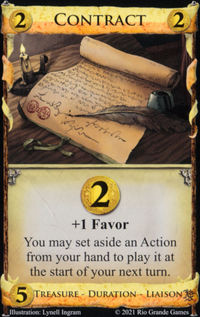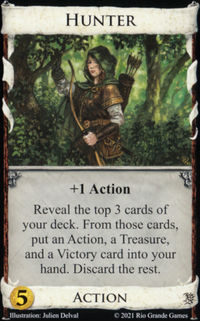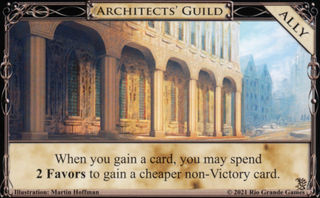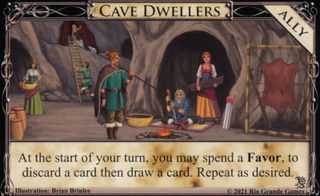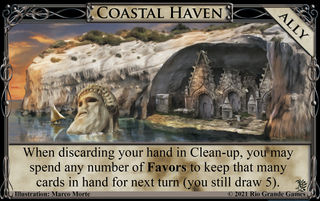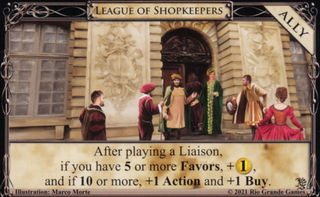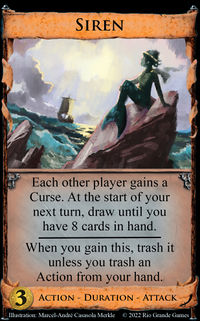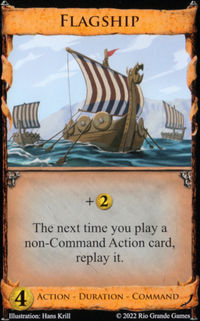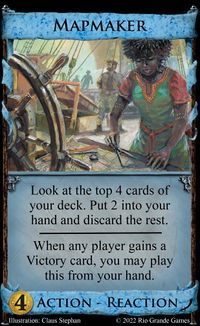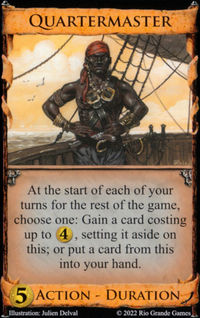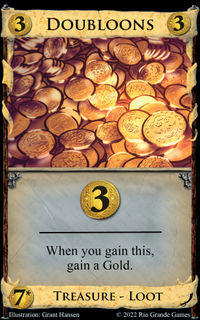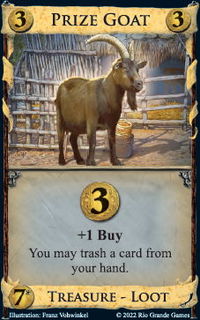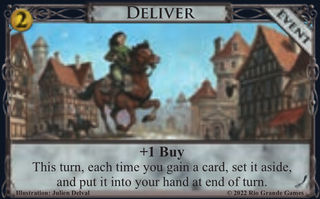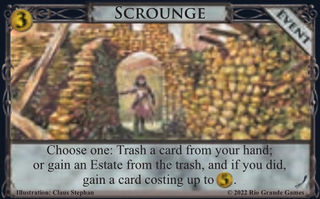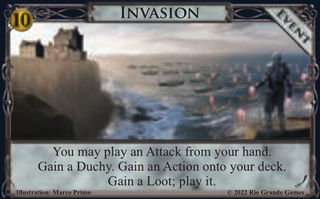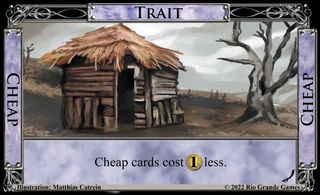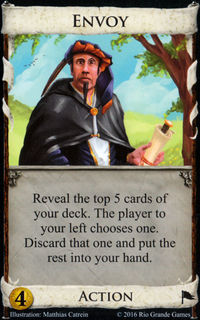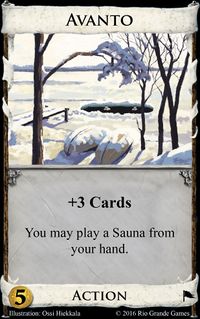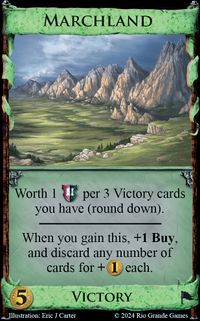Fairgrounds
| Fairgrounds | |
|---|---|
 | |
| Info | |
| Cost | |
| Type(s) | Victory |
| Kingdom card? | Yes |
| Set |
Cornucopia |
| Illustrator(s) | Jessi J |
| Card text | |
|
Worth 2 | |
Fairgrounds is a Victory card from Cornucopia. Following Cornucopia's theme of variety, it increases in value as you get more differently named cards in your deck. In a standard game, its maximum possible value is 6; however, in some circumstances Fairgrounds can be built up to incredibly high point values.
Contents |
FAQ
Official FAQ
- At the end of the game, this is worth 2
 per 5 differently named cards in your deck, rounded down.
per 5 differently named cards in your deck, rounded down.
- So if you have 0-4 different cards, it is worth 0
 ; if you have 5-9, it is worth 2
; if you have 5-9, it is worth 2  ; if you have 10-14, it is worth 4
; if you have 10-14, it is worth 4  ; if you have 15-19, it is worth 6
; if you have 15-19, it is worth 6  ; and so on.
; and so on.
- By default there are only 17 differently named cards available in a game, but sometimes there may be more cards, such as via Young Witch's setup rule, or due to Tournament.
- Use 8 Fairgrounds in a game with 2 players, and 12 for a game with 3 or more players.
Other Rules clarifications
Strategy
Fairgrounds is a moderately influential alt-VP Victory card that rewards having a large variety of cards in your deck. Its relevance in a given Kingdom is heavily tied to how many unique cards you can reasonably expect to have in your deck by the end of the game. There are three general factors to look for as a result:
- How many total uniques are available in the Kingdom. In any given game, there are at least 17 differently named cards available (ten Kingdom cards, three Basic Treasures, three Basic Victory cards, and Curse). This number (and therefore the maximum
 per copy of Fairgrounds) is greater with cards that add additional piles to the Kingdom (e.g. Horses or the Black Market deck), or piles that inherently contain many uniques (e.g. Castles or Split piles).
per copy of Fairgrounds) is greater with cards that add additional piles to the Kingdom (e.g. Horses or the Black Market deck), or piles that inherently contain many uniques (e.g. Castles or Split piles).
- How many uniques a strong deck can support. This number is often significantly different from the total number of uniques available. For example, out of the basic Kingdom cards, at least five (Curse, Estate, Duchy, Province, and Copper) actively interfere with the functioning of your deck as stop cards that do not generate much or any payload. Similarly, if the Kingdom has many terminals and no village, gaining more than one of those terminals is likely suboptimal as you can only play one. As a result, Fairgrounds is usually best in engines which will often use multiple different cards as sources of draw, payload, terminal space, and deck control, or with many different cantrips which stress neither your deck’s terminal space nor your ability to draw. Exiling (e.g., via Camel Train or Sanctuary) or similar effects can also allow you to add more uniques than your deck could otherwise support.
- How easily you can add the relevant uniques to your deck (i.e., the presence or absence of +Buy sources or gainers). Even if there are many viable uniques present, it may take too long to power up your Fairgrounds without additional gains.
When evaluated in such a way, it’s usually possible to compare the expected ![]() you could make Fairgrounds worth against the other scoring options available, and evaluate its relevance as a result. In most Kingdoms, Fairgrounds ends up serving as supplemental
you could make Fairgrounds worth against the other scoring options available, and evaluate its relevance as a result. In most Kingdoms, Fairgrounds ends up serving as supplemental ![]() in the endgame when you cannot afford a Province, similar to Duchy but giving more
in the endgame when you cannot afford a Province, similar to Duchy but giving more ![]() (provided that you have at least ten different cards in your deck). Less commonly, you can build a deck for which a Fairgrounds scores far more than a Province, and as a result will primarily score with Fairgrounds.
(provided that you have at least ten different cards in your deck). Less commonly, you can build a deck for which a Fairgrounds scores far more than a Province, and as a result will primarily score with Fairgrounds.
As with other sources of ![]() , Fairgrounds is typically best gained once you’re ready to start greening. Unlike many other sources, however, gaining non-essential or even harmful cards (e.g. Curse) to increase your number of uniques may also be part of this phase; gaining cards solely to increase your unique count before this point is likely to interfere with building efficiently. Similarly, opting not to play your last copy of a one-shot such as a Horse may also be important. Because Fairgrounds rewards you for every multiple of five uniques, keeping track of how many you have is important for evaluating whether these maneuvers will net
, Fairgrounds is typically best gained once you’re ready to start greening. Unlike many other sources, however, gaining non-essential or even harmful cards (e.g. Curse) to increase your number of uniques may also be part of this phase; gaining cards solely to increase your unique count before this point is likely to interfere with building efficiently. Similarly, opting not to play your last copy of a one-shot such as a Horse may also be important. Because Fairgrounds rewards you for every multiple of five uniques, keeping track of how many you have is important for evaluating whether these maneuvers will net ![]() .
.
There are several notable cases that increase the variety available for Fairgrounds.
- Black Market adds a theoretically almost unlimited number of extra cards, but the number that you actually can and want to buy varies.
- Shelters and Heirlooms are already in your deck at the beginning of the game, so they are free uniques for Fairgrounds if trashing them is impossible. If it is possible you may need to weigh the potential for greater
 against their detrimental effect on deck control.
against their detrimental effect on deck control.
- Castles and Prizes are additional cards that you will often want anyway, though it will be impossible to gain all the possible uniques if your opponents are contesting them. Spirits are also generally useful and particularly relevant when all three are available with Exorcist.
- Extra cards like the Bane pile of Young Witch, Potion, Mercenary, Madman, Spoils, Horse, and split piles add one additional unique, which may matter for Fairgrounds.
- Ruins add up to five new cards (depending on the composition of the Ruins pile). You would usually rather avoid getting them, but if you gain them from an Attack such as Cultist and cannot trash them they can make your Fairgrounds worth more. Buying them is a line of play that you may employ in the endgame to reach the next threshold of five cards.
- Knights add even more new cards than Castles but do not tend to remain in decks as they trash each other, and as a result are not reliably helpful for scoring with Fairgrounds.
Fairgrounds’ possibly asymmetric value to you and your opponents can make it worthwhile to gain copies primarily for the purpose of denying them to your opponents. If, for example, you are relying primarily on Province to score ![]() while your opponent’s Fairgrounds are worth 8
while your opponent’s Fairgrounds are worth 8 ![]() or more, it may be worth it to deny them some copies, as even if you yourself directly score a smaller amount of
or more, it may be worth it to deny them some copies, as even if you yourself directly score a smaller amount of ![]() than they would it reduces the total amount of
than they would it reduces the total amount of ![]() your opponents can score.
your opponents can score.
Museum naturally synergizes well with Fairgrounds because it also rewards ![]() for having many different cards in your deck. Wolf Den, on the other hand, makes scoring with Fairgrounds much more difficult because you will get a
for having many different cards in your deck. Wolf Den, on the other hand, makes scoring with Fairgrounds much more difficult because you will get a ![]() penalty unless you add two copies of every card to your deck. This is sometimes impossible, such as with Shelters and Castles, and in other cases at least takes extra resources and hinders your deck control.
penalty unless you add two copies of every card to your deck. This is sometimes impossible, such as with Shelters and Castles, and in other cases at least takes extra resources and hinders your deck control.
External strategy articles
Note: Article(s) below are by individual authors and may not represent the community's current views on cards, but may provide more in-depth information or give historical perspective. Caveat emptor.
Versions
English versions
| Digital | Text | Release | Date | |
|---|---|---|---|---|
 |
 |
Worth 2 |
Cornucopia | June 2011 |
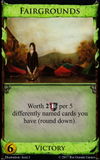 |
 |
Worth 2 |
Guilds & Cornucopia (2017 printing) |
March 2018 |
 |
Worth 2 |
Cornucopia & Guilds (Second Edition) |
March 2024 |
Other language versions
| Language | Name | Digital | Text | Notes | |
|---|---|---|---|---|---|
| Czech | Tržiště (lit. marketplace) | ||||
| Dutch | Kermisterrein | ||||
| Finnish | Markkinat (lit. fair) | ||||
| French | Champ de foire |  |
Vaut 2 |
||
| German | Festplatz |  |
Wert 2 für je 5 Karten mit unterschiedlichen Namen im eigenen Kartensatz (abgerundet). |
(2019) one or more other versions listed here | |
| Festplatz | 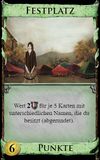 |
Wert 2 |
|||
| Italian | Mercatino (lit. flea market) | ||||
| Japanese | 品評会 (pron. hinpyō-kai, lit. fair) | あなたのカード5種類 (端数切り捨て)につき2 |
|||
| Polish | Odpust |  |
Ta karta jest warta 2 |
||
| Russian | Ярмарка (pron. yarmarka, lit. fair) | ||||
| Spanish | Recinto Ferial |
Trivia
Secret History
Relevant outtakes
The mentioned outtake eventually got used on Animal Fair and Advance.
Further development comments
"1 ![]() . Worth +1
. Worth +1 ![]() extra for every three differently named (supply) cards in your deck, except for Copper and Estate."
extra for every three differently named (supply) cards in your deck, except for Copper and Estate."
This was the last thing they suggested. As Tom said, the goal was to make Fairgrounds change value in more places (while being balanced). It had originally changed every 2 or 3 cards, now it was only changing every 5 cards. This wasn't a priority for me; I just wanted to make sure Fairgrounds was worth going for sometimes, i.e. getting ~15 different cards for. I didn't want the card to be more complex and sure wanted to count non-supply cards, because you know, that's fun.
"1 ![]() per differently named card, minus 10"
per differently named card, minus 10"
Wei-Hwa suggested this, and I played a few games with it. Wei-Hwa ended up deciding it was not actually an improvement. It has a certain charm, and the math is easy. For me it was much more of a real option than these other ones. It didn't work out though.
"Worth 4 ![]() if you have at least 10 differently named cards in your deck, or 5
if you have at least 10 differently named cards in your deck, or 5 ![]() if you have 13 or 14, or 6
if you have 13 or 14, or 6 ![]() if you have 15 or more."
if you have 15 or more."
A few people, including Dale, suggested using a chart. This is the simplest chart you could do. I didn't want a chart because I wanted the card to keep getting better in situations where you could get more cards. It feels bad to limit it even if it mostly doesn't change things.
"Worth 1 ![]() for every two differently named cards in your deck, except for Estate, Copper, Silver, Fairgrounds"
for every two differently named cards in your deck, except for Estate, Copper, Silver, Fairgrounds"
I'm not sure if Wei-Hwa suggested this one, but I see it in the file. I was never fond of the list-of-exemptions approach, though I think I suggested the first one (exempting Copper and Estate).
There were more suggestions beyond these, but they get progressively less interesting, and I don't think I actually played any of them.
As you can see, some work was put into this simple card! The next time you buy a Curse to gain points, remember these brave souls.


